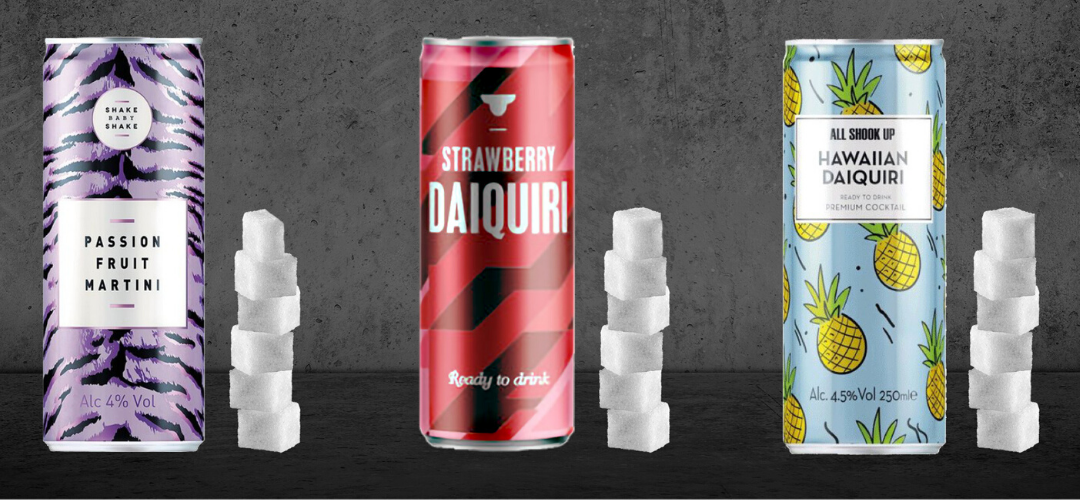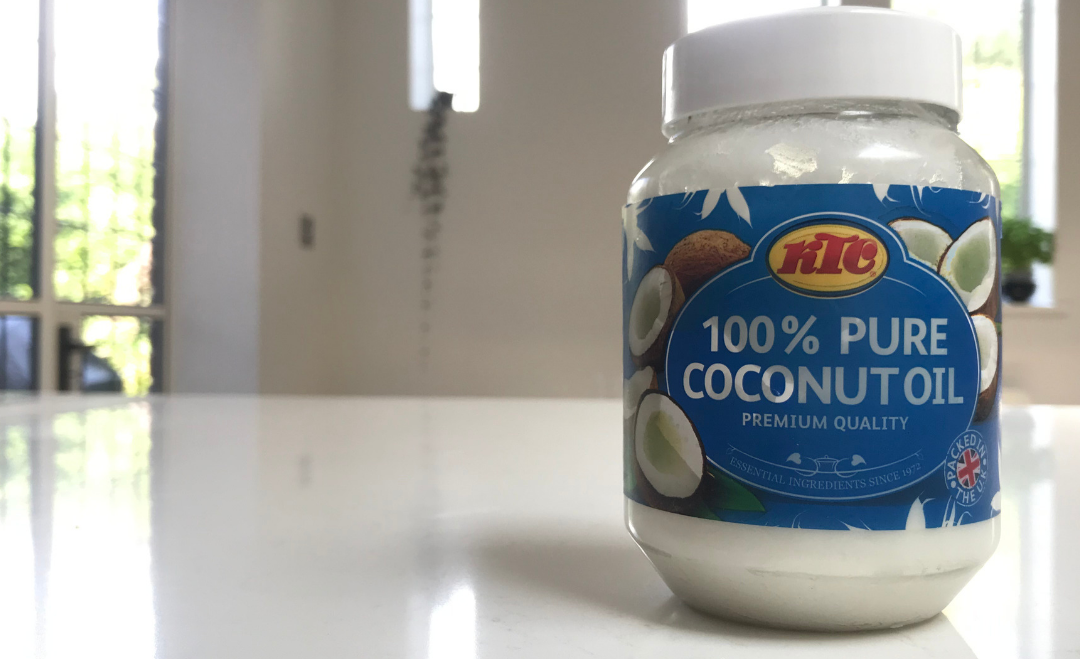
by Nutrilicious | Mar 3, 2020 | Surveys and insights, Changing mindset
Are you working on a nutrition and health strategy for change? Trying to convince your colleagues or board that your wellbeing approach is right? Developing a new food product and want to know how it will be received from a nutrition, health or sustainability point of view?
Over many years of working with people in the same situation, we know that you’re most likely to succeed if your process includes consulting those who will ultimately be influencing your target consumers – their key influencers including health leaders, NGOs, lobbying groups and health media.
Why carry out qualitative research with influencers?
Too often we’ve seen organisations launch a new initiative without consulting this important audience first – making it far more likely that the initiative won’t be the success it could be.
Do you know who is currently influencing your key target audiences on health and/or sustainability? Do you know what they are saying and might say about you and your initiatives?
These influencers will have a deep understanding of this changing landscape, the sector and the way population groups think and act as well as what they themselves want and may be telling them about your initiative. That’s what makes their insights so valuable – whether you’re using it as proof of an approach and a way to secure funding, or to help shape your thinking.
How to go about getting relevant insights
In 2019, we enjoyed many in-depth, eye-opening conversations with key health and nutrition influencers, carrying out qualitative research for clients. We listened, we learned and we helped companies inform their strategy, sell their vision to their colleagues and boards and develop new products.
The interviewing was vital, and it’s not always easy to get right. Here are our Nutrilicious top things to think about when embarking on your insights-gathering mission:
1. Choose your targets wisely. Work out the ideal criteria for mapping who you want to speak to and why. Always include disrupters and future thinkers if you have a longer term goal.
2. Your interviewee is likely to have a busy day job. Allow sufficient time for chasing appointments and contingency for cancellations.
3. Interviews don’t have to take place in a private space, but make sure it won’t be too loud.
4. Conduct the interview in pairs, to help capture everything but not overwhelm the interviewee.
5. You’re there to listen, not inform. You may be an expert in the field but you need to adopt a beginner’s mindset.
6. Try to extract facts, not opinion, and delve deep. The golden question is ‘why?’. Ask it again and again.
7. If you’re not a qualified practised insights interviewer, it’s important to work with a qualitative researcher or research team to help you. That’s why we partner with See Research. With stakeholder qualitative research we find that a combo team of a nutrition/dietetic expert lead and qualitative researcher is ideal.
8. Always ask permission before recording and don’t video the whole interview, just a summary at the end. You don’t need fancy equipment – a phone on a tripod should be enough, just check that you’re actually recording and your mobile is switched off!
9. If you can’t get a face-to-face meeting, video chat works too, using Zoom, Skype or an equivalent.
10. The interview should just be the beginning of the relationship. Use it as a way to build an understanding of what they care about, which opens doors for future conversations, for you helping them and indeed for them helping you at the communication phase.
11. What will you do with your results? Forget the insights report: it won’t be read widely. Better to paint a picture with infographics and edit your summary videos down to a single short film highlighting the key themes you’ve discovered.
We’re here to help
Hopefully, these points are useful. But if you need more support, we’re here to help – from helping identify your golden targets to delivering the learnings to support your objectives. Just get in contact, we’d love to hear from you.

by Tanya HAFFNER | Jan 23, 2020 | Thoughts, Changing mindset, Event Reports
What’s going to have the most impact on reducing sugar consumption in the UK – educating consumers and encouraging them to change their habits, or changing the environment, reformulation and marketing? Is responsibility ultimately on the individual or industry?
That’s one of the key questions that came out of a panel discussion I was part of at an Action on Sugar event held at Parliament for Sugar Awareness Week.
Campaigners, government officials, health experts and industry experts came together for a networking opportunity all wanting to make a difference, before sitting down to hear from our host Andrew Selous MP, who’s served on the Health Select Committee; Katherine Severi, Chief Executive of the Institute of Alcohol Studies; Professor Graham MacGregor, Chairman of Action on Sugar; and me, asked to speak about how sugar reduction can improve the health of the most vulnerable and what’s our view on industry’s role.
The theme of this year’s Sugar Awareness Week is ‘What’s in your drink’. Action on Sugar have done an excellent job at highlighting a loophole in regulations whereby alcoholic drinks are not obliged to label any nutritional information about their products – even though the calorific and sugar levels are often alarming.
There was universal agreement in the room that something must be done – and everyone can play their part by emailing their local MP to demand change. You can find lots more information on the Action on Sugar website, and I highly recommend you do so.
What, though, will be the ultimate impact of labelling? As Professor MacGregor said yesterday, although labelling and education are a vital step, it’s the environment, formulation of products and marketing that will truly have an impact.
As a nation we are consuming too much sugar on average, which can often mean too many calories, leading to weight gain and obesity. Children, our most vulnerable group, are consuming more than double their maximum recommended allowance of sugar.
In England, around 1 in 4 children have tooth decay and 1 in 3 are overweight or obese by the time they leave primary school.
What’s more, as a 4-5 year old, you’re three times more likely to be overweight or obese if you’re in the most deprived socio-economic group compared to the least deprived: 27.2% vs 17.3%. The results are even worse for 10-11 year olds.
Andrew Selous shared what he discovered on a learning visit to Amsterdam, where the mayor was inspired to do more to reduce child obesity after seeing a girl in a playground who was too overweight to do a forward roll. As the mayor pointed out, if one third of children were suffering from tuberculosis, there would be no avoiding the issue. Action would be taken. The army would be out on the streets helping.
Yet the with obesity comes the complex problem of stigma, shaming and how best to deal with the issue in a ‘publicly correct’ way that’s not going to impact mental health.
What is the role of the wide food industry, retail and out-of-home sectors?
Of course, consumers should make their own choices – and of course we want to encourage them to make good, informed choices benefiting their health and the planet where support for this must continue.
But numerous reports, behavioural change groups and experts globally all concur that if we leave things to individual choice alone, we will not achieve the behavioural change we need to see. We live in environments that are swamped with foods that are high in calories, fat, salt and sugar which are also low in protective nutrients and are heavily promoted to us. Industry has a crucial role to play in providing and marketing healthier choices. Industry can no longer blame poor eating habits on the consumer and their personal choice. It’s especially important for the vulnerable groups, who need the most help.
Examples of positive action for change
An inspiring example from Amsterdam was a supermarket who decided that they didn’t want their consumers to eat unhealthy foods. They changed their environment, made healthier food more accessible, reduced the amount of unhealthy products and made sure the labelling was clear. They had a profit to make but – led by the top – decided that the health of the public was their responsibility too.
Katherine Severi pointed to the action in Scotland to price alcoholic beverages based on the number of units they contained. A 3-litre bottle of cider that previously cost £3.50 went up to over £11 when the law was introduced in May 2018, making it far less accessible to the most deprived.
While it’s too early for full data analysis of the impact, early signs are extremely positive on the positive impact the pricing can have.
What are our recommendations to industry?
1. Stick with the sugar reduction despite the challenges (and ultimately you may have no choice). It makes sense and it’s vitally important to continue to see small subtle incremental reductions in sugar and calories. Reformulation takes time but it IS achievable – we have a precedent with salt reductions.
2. Have a nutrition and health strategy with teeth. It must be:
- Led from the top
- Long-term
- Multi-faceted
- Consistent and joined up across departments and suppliers
- Measured
- Aligned to both health and sustainability
- Communicated and understood right across the business – from CEO to porter
Marketing and external communications should focus on healthier choices, and for optimum impact should incorporate smart partnerships.
We can’t ignore that change has its challenges:
- Industry has to make money. We can’t impact on jobs in these vulnerable times
- There will be growing pains and these need to be listened to, carefully considered and supported
- Change takes time, goodwill and, crucially, support from the top
But there is reason to believe that now, perhaps, there are colliding drivers to move us in the right direction:
- The health of the nation and its impact on socio-economics is stark
- More and more consumer groups are demanding action, for both health and environmental issues
- The financial necessity to change is on the horizon. The likes of Share Action, amongst others, are telling investors that if business don’t change, they will be at risk.
Getting the government to take action
The government said they wanted to half childhood obesity by 2030. That is not going to happen with their current plan.
If our new Government doesn’t have the foresight to act and create the level playing field that industry says it needs, industry needs to get together and lobby for it to be implemented over a reasonable period of time, which at the very least:
- Ensures only healthy products (not high in fat, salt and sugar) to be marketed, promoted and advertised
- Makes uniform colour-coded labelling on front of pack mandatory on all products sold in retail and out-of-home
At the moment, despite all the health and economic imperatives, obesity simply isn’t the top of the agenda.
As each member of yesterday’s panel said, for the sake of our nation’s health and the planet, it’s going to take us all coming together to create a powerful voice and movement for change.

by Nutrilicious | Aug 19, 2019 | Hot Topics in nutrition, Surveys and insights, Changing mindset
At long last, the Scientific Advisory Committee on Nutrition (SACN) report on saturated fats and health was published this month. The conclusion? Nothing new: saturated fat leads to heart disease and we should limit it to 10% of our calorie intake. So will it finally put an end to the irresponsible advice that abounds suggesting saturated fat isn’t so bad for you?
It’s taken over a year from the draft report to final version because of the number of comments, criticisms and questions as to why certain studies were or weren’t included as part of the overall evidence into sat fats.
The SACN committee has investigated and answered each one, including only the highest quality evidence available. The studies that came to the wrong conclusions about saturated fat were shown to be flawed.
They’re open about certain limitations to the evidence: for example, whether replacing saturated fat intake with carbohydrate can be beneficial. None of the studies look specifically at ‘good’ carbs (for example wholegrain cereals), just at carbs overall. Further research still needs to be done into this.
But the overall conclusion was inescapable: to reduce cardiovascular disease we should lower our intake of saturated fat.
So will high profile influencers like Dr Michael Mosley or Joe Wicks take note and stop promoting ingredients like coconut oil, which is shown to have higher saturated fat than butter and lard?
Sadly, we think it’s unlikely. For one reason or another they seem to have too much invested in it.
But if you’re reading this and feel as strongly as we do about the need to stop the irresponsible advice, join us in canvassing the influencers to open their eyes to the dangers of what they’re suggesting – rather than just thinking about their commercial interests or looking for the next great headline. #saynotosatfat
Go to the British Nutrition Foundation website for a summary of the SACN report findings

by Nutrilicious | Apr 16, 2019 | The Nation’s Health, Changing mindset, Impactful health initiatives
We’re excited to be involved in a new initiative to help tackle the critical problem of poor diet amongst lower income households: Shop Well – Eat Well. It’s a collaboration between the British Dietetic Association (BDA), Alpro and the Southwark Hub, with the aim of a multi-angled approach to have a real and lasting impact.
Launched last month, we brought together experts to give their insights into key topics. Here’s a summary of some of the key points, followed by links to each of the presentations, which we highly recommend you take the time to watch!
People on lower incomes have a worse diet and shorter life expectancy
There is a direct correlation between diet and income, in turn affecting health. The lower your income, the more likely it is you will:
- Eat more sugar, processed foods, fat and sodium
- Eat less fibre, vitamin A and folate
- Be less likely to meet iron, folate and calcium recommendations
- Eat less oil-rich fish
- Eat more take-aways
- Cook less at home from scratch
People in lower income groups in the UK have a significantly shorter life expectancy than the average: by nine years for women and seven for men.
They have double the rates of cardiovascular disease, lifestyle-related cancers, type 2 diabetes and total mortality compared to the national average. Obesity prevalence of the most deprived 10% of children is approximately twice that of the least deprived 10%.
This is not new news. Countless attempts have been made to try to address the problem and encourage people on lower incomes to eat more healthily, thereby increasing their quality of life and life expectancy.
But when it comes to eating habits, behaviour change is very difficult to achieve.
Barriers to healthy eating are multiple, complex and interlinked – psychological, financial, environmental, conscious and unconscious. Among lower income households they include:
- Financial barriers – For low income families, a big barrier to buying new foods or going to a new food shop is not knowing how much the food will cost, or assuming that it will all be expensive. Parents want to know exactly how much their shopping basket is before they reach the checkout.
- Social barriers – Food habits get passed down the generations as young people grow up and become parents themselves. What children see their parents and families doing is what they grow up thinking of as ‘normal’.
- Preparation space – Cooking from scratch relies on kitchen equipment, confidence in cooking skills, time to prepare food and pleasant surroundings – not the case for many on low income.
- Limited bandwidth – The cognitive burden of living under financial strain and other modern day life stresses reduce parents‘ mental bandwidth; brainpower that would otherwise go to planning ahead and problem-solving.[1] Families in this situation look for quick and easy ways to eat, and takeaway and convenience foods provide an in-the-moment solution to feeding children quickly, affordably and safely.
- Advertising and shop layouts – Cues such as special offers, advertising for takeaways, attractive packaging and child-height shelving nudge families towards less healthy foods in shops.
- It’s not always a lack of knowledge or cost that’s a problem, it’s translating knowledge to practice.
In fact, most eating behaviour is driven by unconscious, habitual processes. These are largely immune to education when it comes to behaviour change. Yet this has been our predominant approach to changing dietary behaviour!
Breaking the habits of a lifetime
Multiple collaborative strategies are needed to succeed in changing behaviour: from government, local authority, industry and all food providers, alongside continuing to help individuals overcome their personal barriers.
We need to making healthy eating
- easy,
- habitual, and
- normal
As behavioural psychologist Dr. Paul Chadwick says, it’s not sustainable for people to have to think about every food choice that they make. Healthy eating has to become the default option.
A new initiative for change
Behavioural science shows the importance of interactions between the individual and their physical and social environment when it comes to habit forming and breaking.
It’s time the food environment changed to make healthy eating as easy to attain as possible for all, including low affluent groups.
It’s also time for families and individuals to be supported in overcoming barriers to breaking the unhealthy habits.
 We’re excited to be part of the new initiative, Shop Well – Eat Well, to help enable this – especially targeting those on a low income.
We’re excited to be part of the new initiative, Shop Well – Eat Well, to help enable this – especially targeting those on a low income.
Starting as a year-long pilot in Southwark, South London, it’s kicking off in June. Community charities and volunteers will join to create peer and professional-led healthy eating seminars and workshops tailored to the young, old and families.
At the launch, Kate Arthur, UK External Scientific Affairs & Nutrition Manager at Alpro, explained: “We wanted to find interventions that would encourage people to think about their food choices differently.
“Going directly into the community to find out what will work for people is the logical thing to do. We’ll be working on different engaging activities such peer led cookery workshops and drop in seminars, with help from the BDA Let’s get Cooking and an advisory committee of experts, always with an eye on the main barriers.
“Ultimately, we’ll be assessing to see what really makes a difference over the next year of the campaign and we’ll share any success stories widely with local communities nationwide and the dietetic community as a whole.”
Caroline Bovey, Chair of the British Dietetic Association added: “By partnering on this project, and working with the food manufacturers and shops that people are accessing daily, we’re excited to directly tackle some of the wider barriers to healthy habits in a local area. The BDA is delighted to be working with Alpro and the Southwark wellbeing hub to help people who often have to prioritise the other demands of daily life over their food choices.”
Take advantage of insightful presentations and useful resources
At our launch, five leading experts presented the latest evidence and initiatives to help overcome barriers to healthy shopping baskets and healthy eating. The presentations are available on the Shop Well – Eat Well website. Make yourself a cup of tea, watch, learn and be inspired:
– Dr Paul Chadwick, behaviour change leading expert: A scientific approach to behaviour change
– Sue Baic, Registered Dietitian: Affordable, healthy and sustainable eating in practice
– Duncan Brown, Development Director at charity Shift design: How does affluence impact on food choices?
– Kate Arthur, Alpro UK’s External Scientific Affairs & Nutrition Manager: Changing behaviour in the community
– Nilani Sritharan, Company Nutritionist at Sainsbury’s Supermarkets Ltd: Making healthy shopping easier
You’ll also find practical and engaging resources to help consumers overcome their barriers to healthy eating.
#shopwelleatwell @SouthwarkHub @BDA_Dietitians @Alpro

by Tanya HAFFNER | Nov 12, 2018 | Changing mindset, Impactful health initiatives
The facts are now mounting that our food choices not only impact our health but are also fast depleting the planet’s resources.
Taking into account every stage from production, distribution and delivery through to waste, we see the sizeable impact our food choices have on the environment. What we eat:
- Contributes 20-30% of total greenhouse gas (GHG) emissions
- Is the leading cause of deforestation, biodiversity loss and soil and water pollution
- Accounts for 70% of all human water use
- Is responsible for global inequality: current food production is adequate to meet the needs of the global population of 7 billion, however, 2 billion exceed their needs whilst 800 million suffer hunger
Additionally, 30–50% of all food produced is spoiled or wasted.
If we’re going to save our planet, we need to change the way we eat.
Choosing a sustainable diet
For the first time, the UK government’s most recent Eatwell Guide acknowledged the importance of eating to help sustain the planet, as well as for health.
It was modelled to ensure that all macro and micronutrient needs of people aged 5 and over are met, while the nation’s carbon footprint is reduced by almost one third.
- Supporting our planet
The Eatwell Guide recommends that 80% of food we consume should be of plant origin: the focus is on reducing meat – especially beef – and dairy, which have the most impact on the world’s resources.
– Livestock production is by far the most significant contributor to GHG emissions (methane, carbon dioxide and nitrous oxide) contributing to 14.5% of all GHG emissions.
– Cattle consume 40% of all grains produced. Over one third of arable land is dedicated to growing grains solely for animal feed production.
– Livestock is the main cause for deforestation, biodiversity loss, degradation and water pollution.
- Improving our health
The benefits come not only to the planet but also our health. As we discussed in our blog on the popularity of vegetarian and vegan diets, it is well established that diets higher in plant foods and lower in meat products result in a lower intake of both energy (calories) and saturated fat, while increasing fibre intake.
Those with a plant-based diet suffer significantly less from diseases such as obesity, type 2 diabetes, cancer and heart disease.
The barriers to change
With only 1% of the population adhering to the previous (and less plant-based) Eatwell plate, how can we now expect people to adopt a more environmentally-friendly diet?
The British Dietetic Association is committed to bringing sustainable diets to the top of the dietetic agenda. They’ve put together a new toolkit providing both scientific knowledge and the practical tools to empower dietitians and consumers to adopt a diet focussed on sustainability.
The advice follows extensive research into the science of sustainable eating and top barriers and motivators. These were identified as:
- Lack of practical knowledge and resources
- Perceptions that sustainable healthy eating requires more time, more money and taste has to be compromised.
- What’s on offer from retailers, restaurants, take-aways, etc. – with an imbalance toward unhealthy, plant-based foods versus health and affordable plant foods?
- Language needing to be tailored to the audience depending on culture, age group, socio-economic and education status
- Clarity over messaging, for example on fish and processed foods
- The misconception of sustainable only associated with vegetarian/vegan diets, and of them being nutritionally inadequate
Sound familiar? Have you been able to overcome the barriers and use successful motivators to increase your own sustainable eating, or that of a client?
Be first to benefit from the BDA’s Sustainable Diet toolkit
We are giving an exclusive preview of the toolkit along with an overview of the latest science on the upcoming FREE CPD NutriWebinar on Sustainable Diets, 14 November 8 to 9pm.
The toolkit will be formally launched at Food Matters Live on 20 November. Find out more and register now

by Tanya HAFFNER | Oct 8, 2018 | Hot Topics in nutrition, The Nation’s Health, Changing mindset
The most recent government guidelines on fibre intake recommend 30g per day for adults. Levels are currently at just 20g per day for adult men and 17.1g per day for women – that’s an average 68% increase in intake needed to meet recommendations.
And it’s not just adults: there’s a significant disparity between recommended and actual fibre intake across all age groups.
So why is fibre so important? And what can we do to help people meet the recommended intake levels?
Here’s a quick overview. To explore the topic in more detail, join our upcoming Fibre NutriWebinar, on Wednesday 7 November.
The benefits of fibre
Dietary fibre has long been recognised for its health benefits. But it’s only in recent years that our understanding and appreciation of it has significantly progressed.
Fibre’s health effects mainly result from two key factors – its physical properties (eg stool bulking, viscosity, binding ability) and its effect on the gut microbiota and luminal environment.
Amongst its many beneficial properties, clinical trials have proven that fibre:
- Decreases blood pressure
- Increases satiation
- Decreases glucose absorption
- Increases bacterial a faecal mass (commonly associated with health benefits including reduced risk of colon cancer)
- Exerts benefits through gut microbiota
Where are we getting our fibre from?
The main sources of fibre in the UK are cereals, vegetable and potatoes, contributing to 70% of total intake.
Interestingly, white bread and potato products prepared with fat (eg chips and crisps) are significant contributors. This is despite the fact that they have comparatively low fibre content, showing that consumption is high.
One of our challenges is to educate the public on healthier fibre sources – fruit, vegetables, whole grains and pulses, rather than broad recommendations on increasing cereals.
Understanding and helping consumers
We know that despite the convincing body of evidence for the role of dietary fibre in many chronic conditions, translating and achieving fibre recommendations in practice can be challenging.
Understanding the key barriers faced by the public and putting forward strategies to overcome these is key to facilitating better health for all.
Find out more about the FREE Fibre NutriWebinar with Dr Megan Rossi, RD and register now.
It’s one of our ongoing NutriWebinar series examining key nutrition topics with experts in the field.







